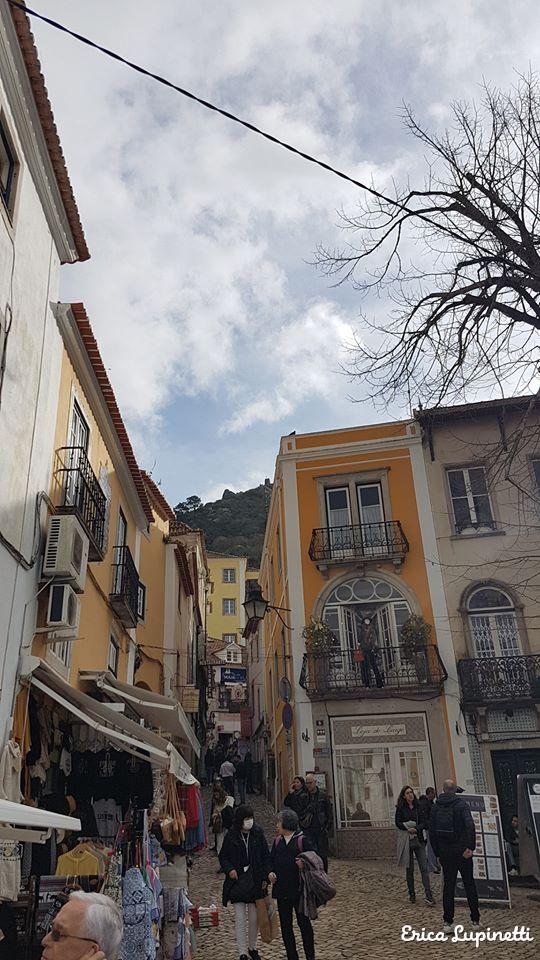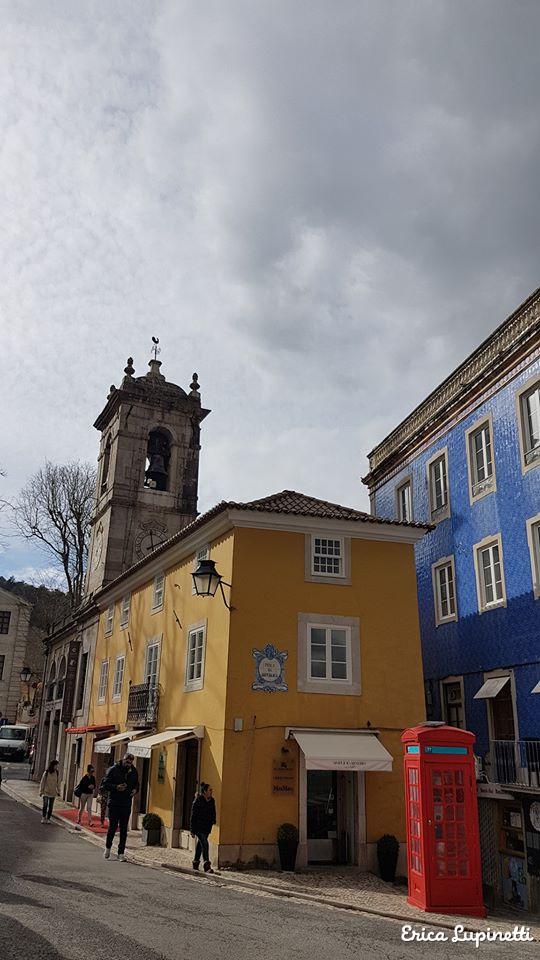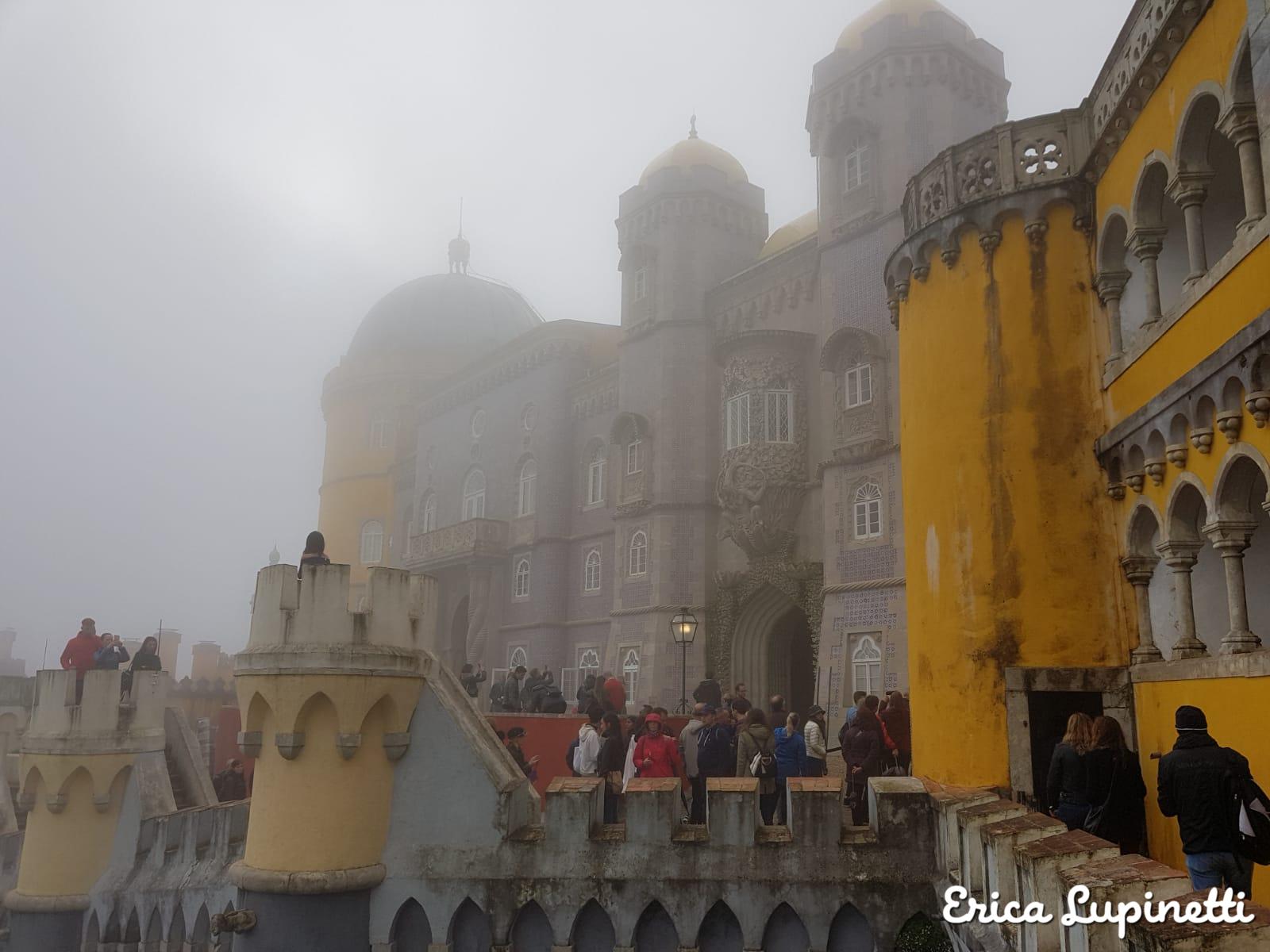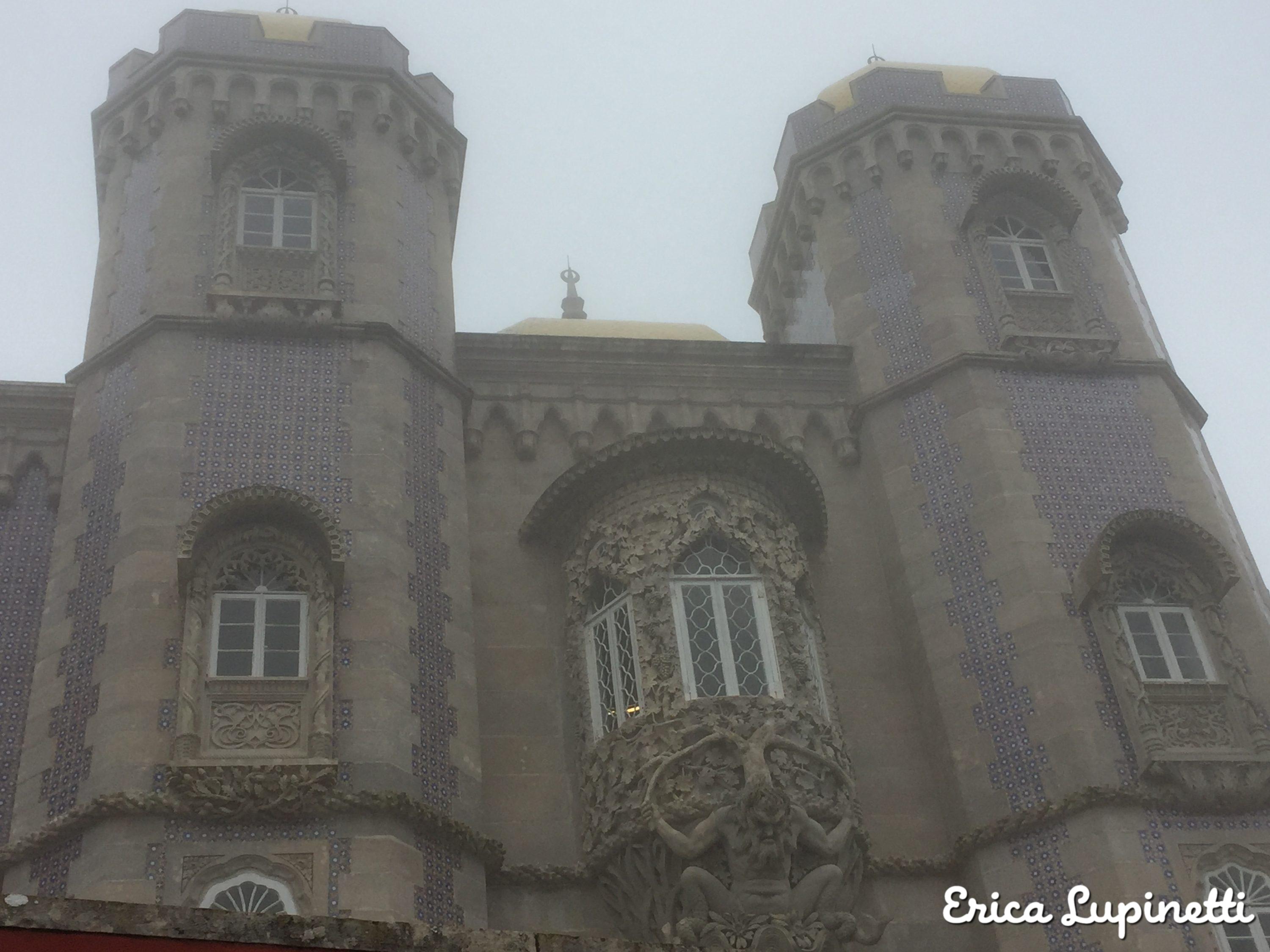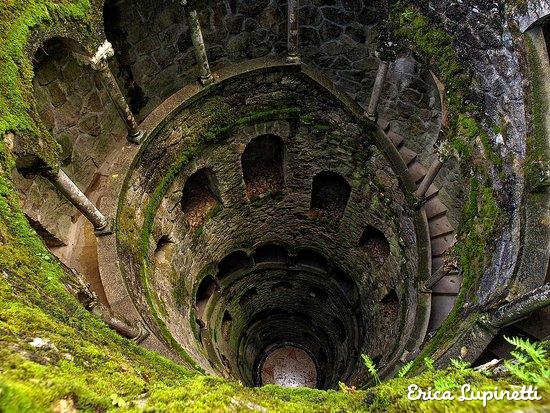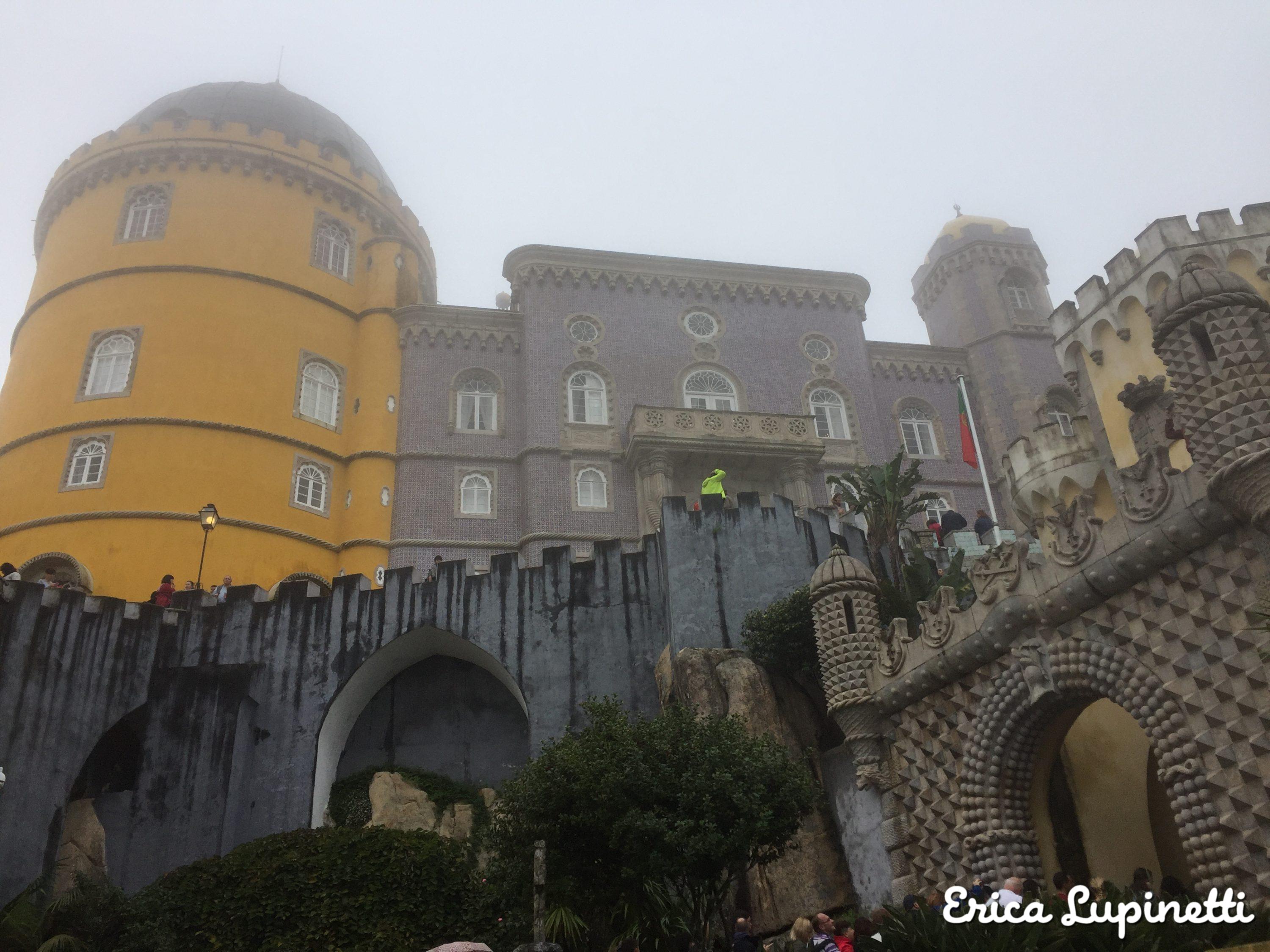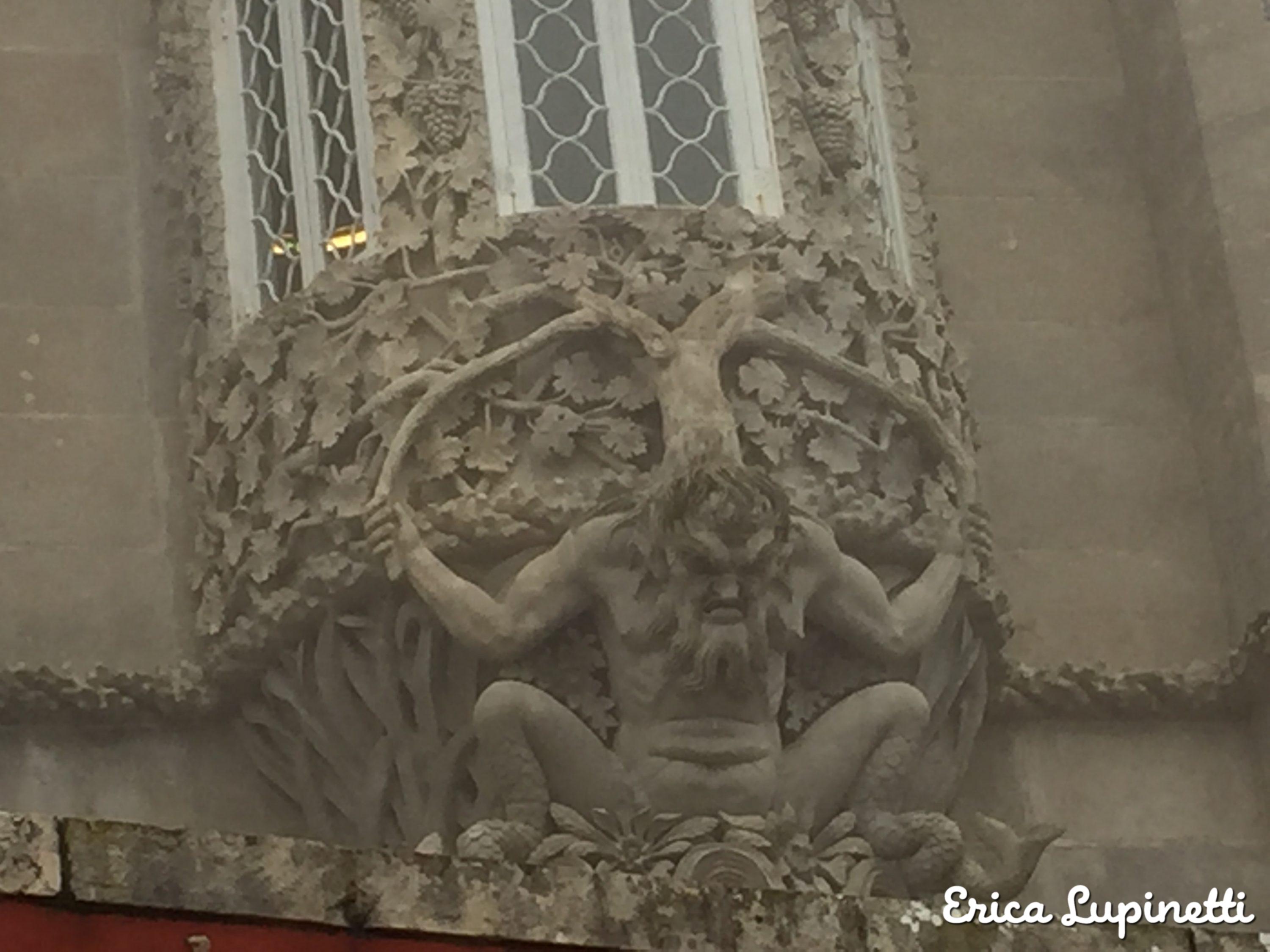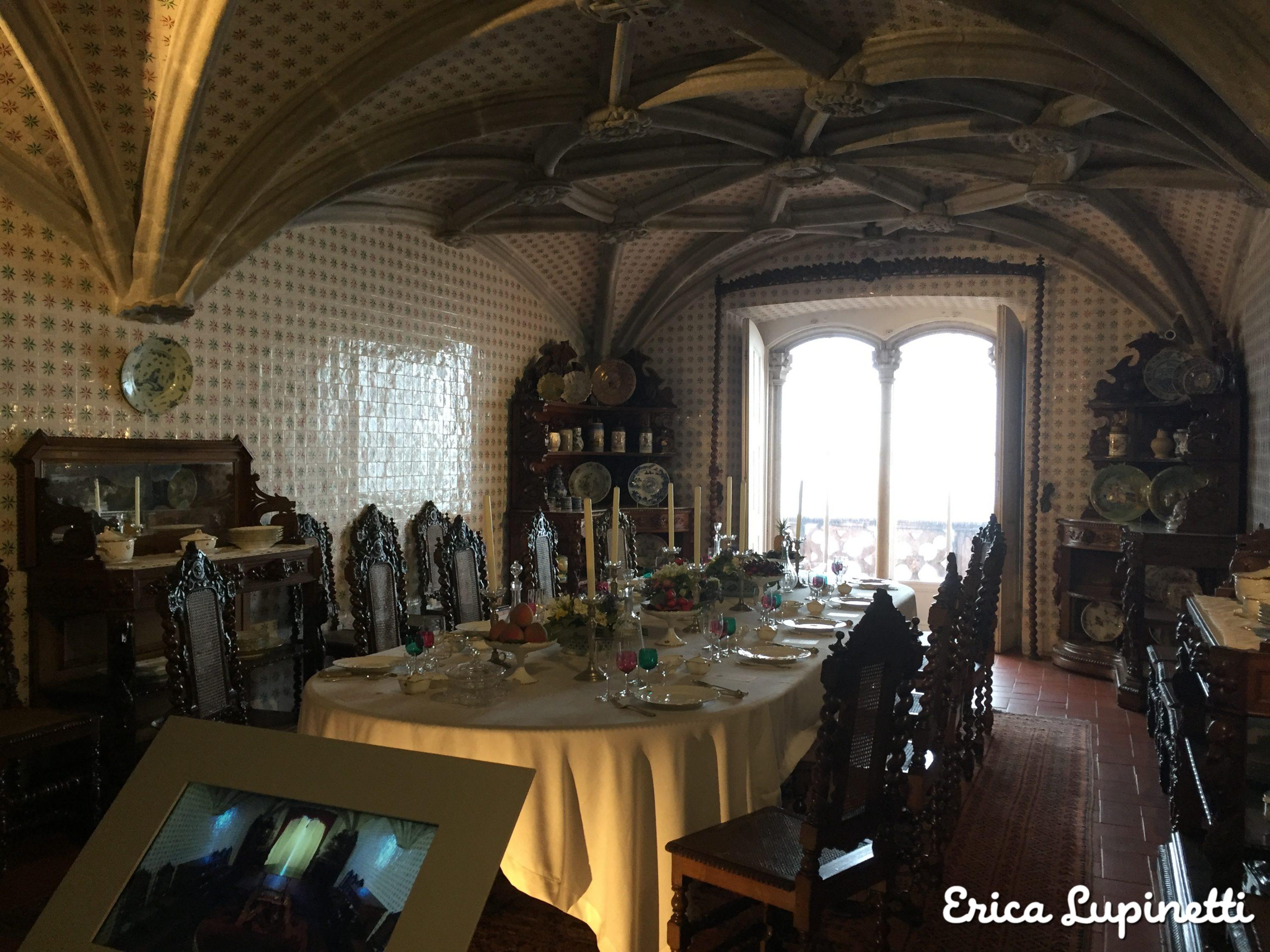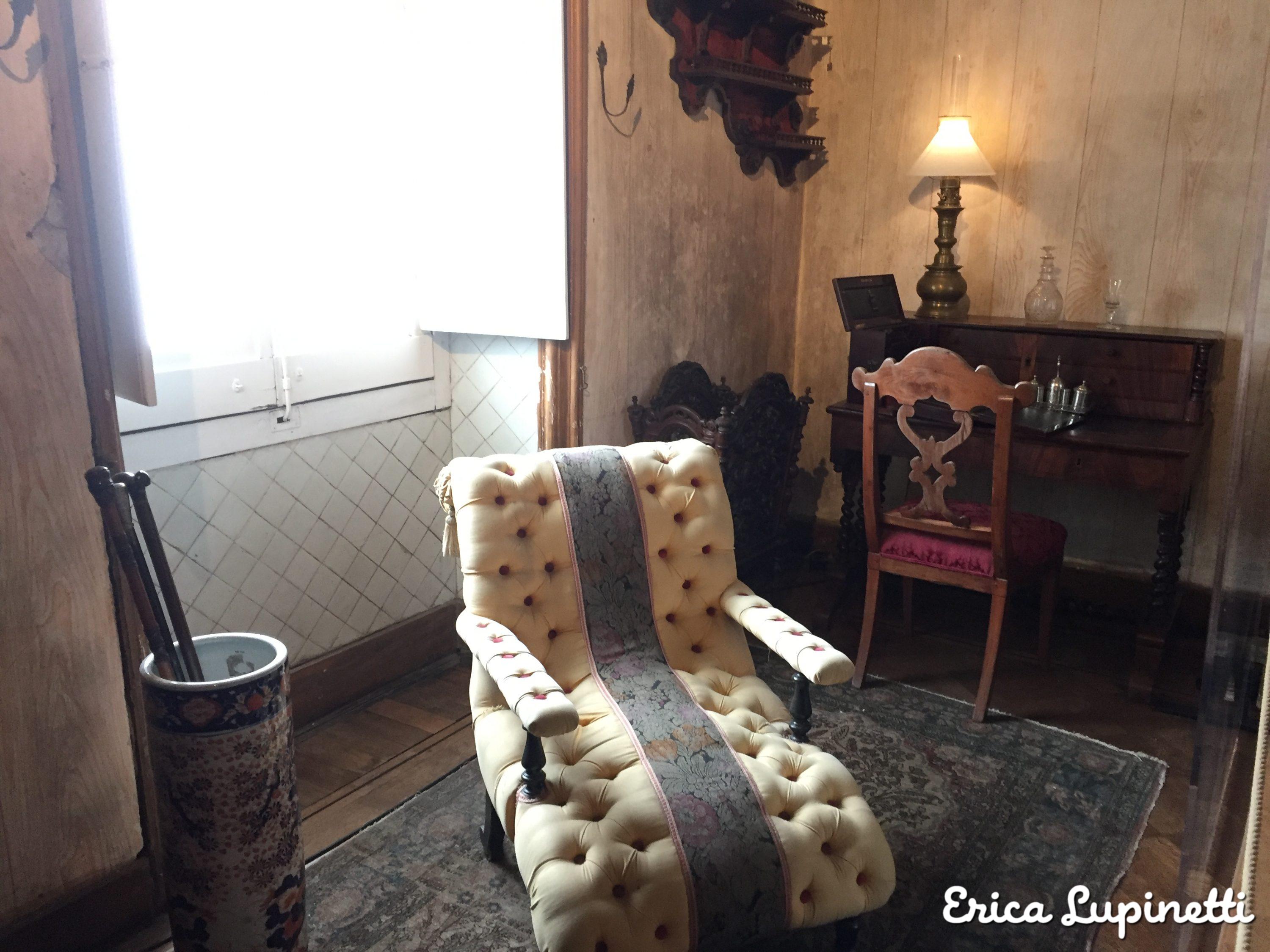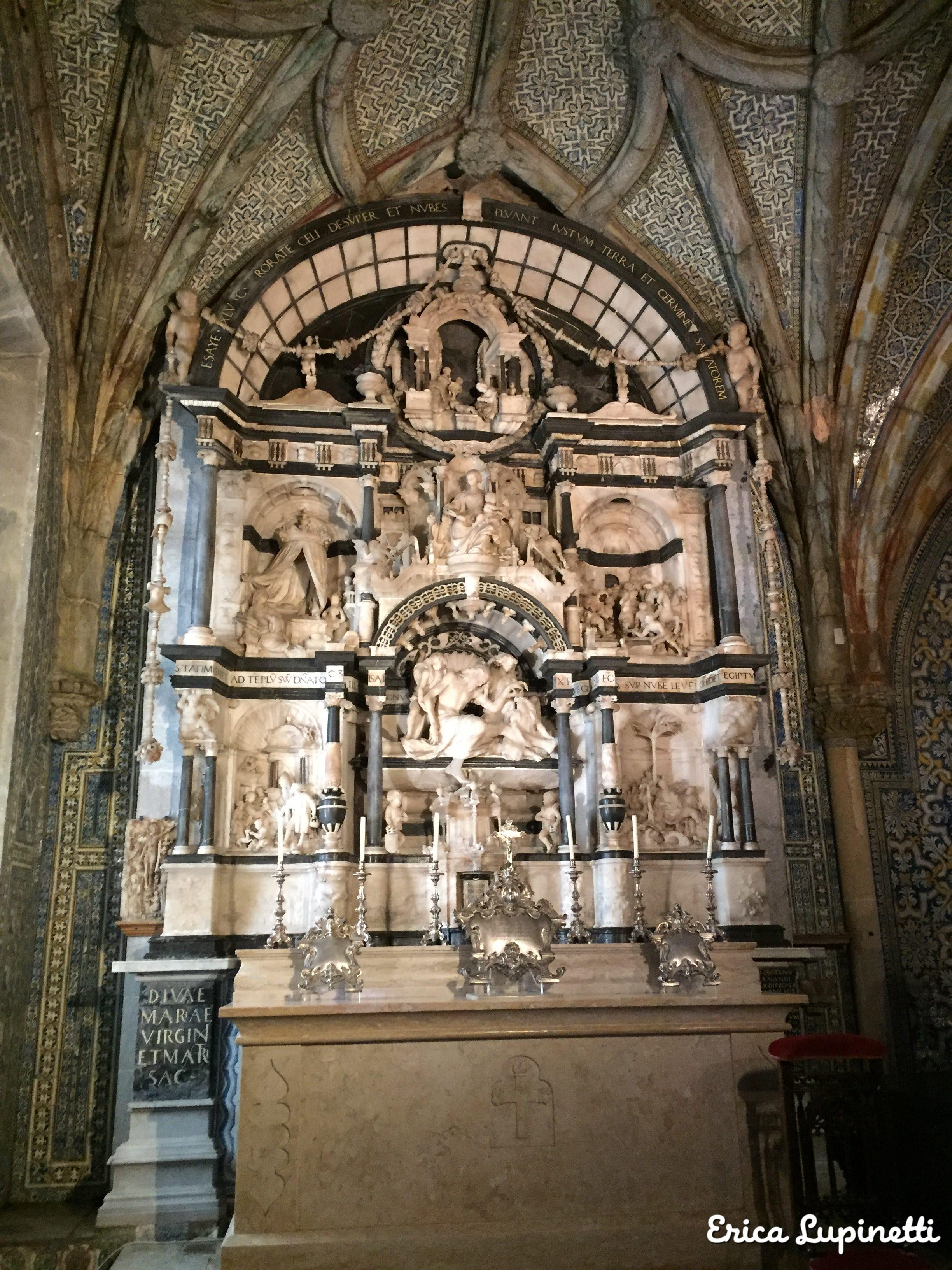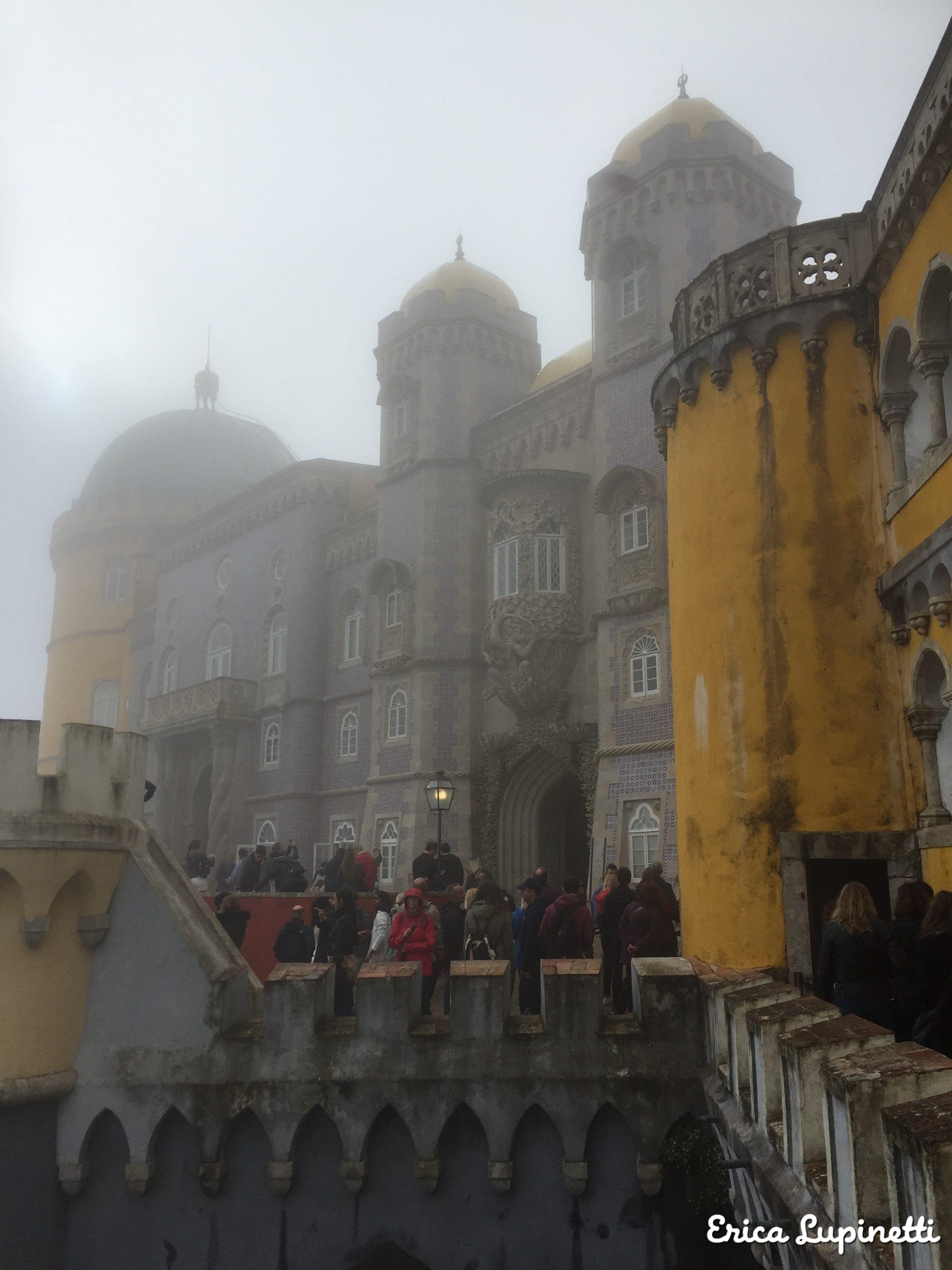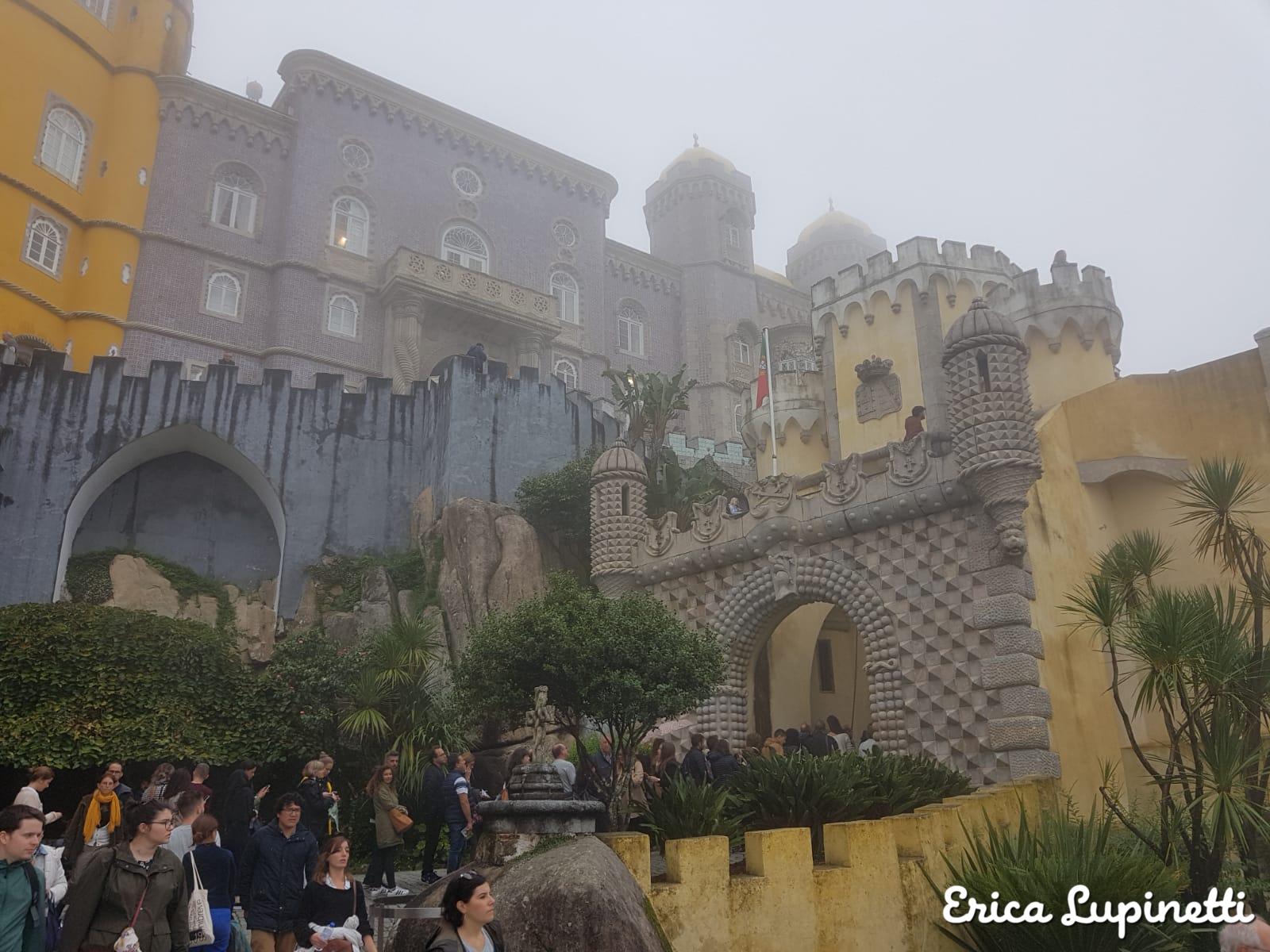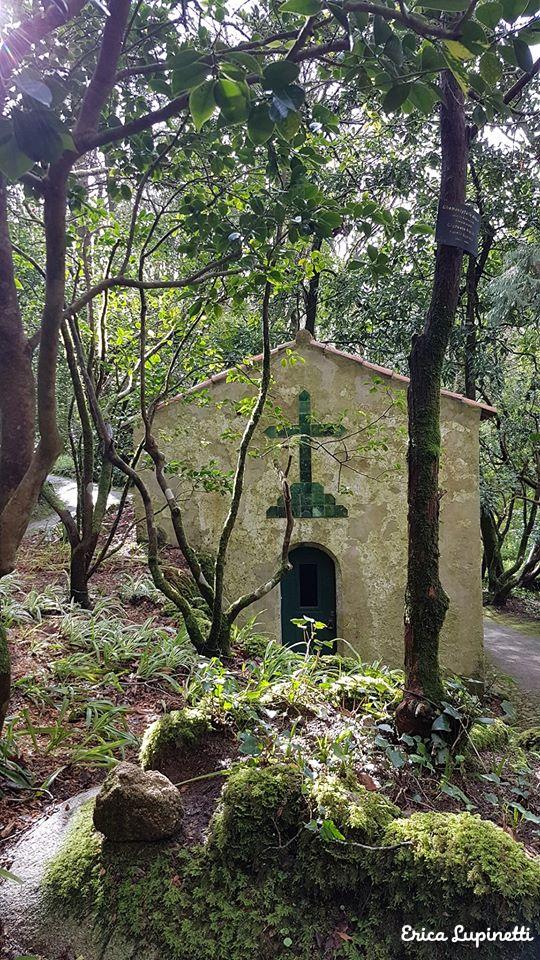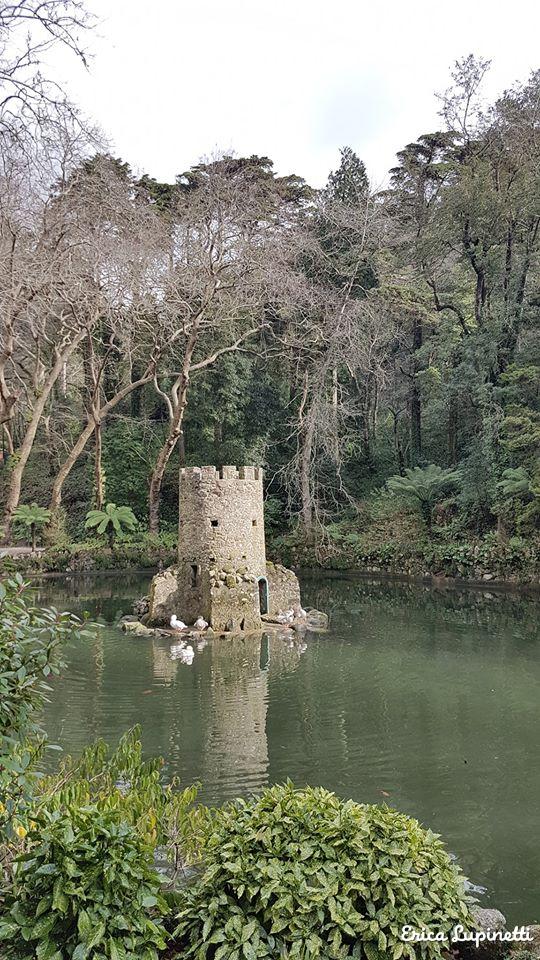Sintra is a fascinating town hidden in the woody pine-covered hills of the Serra de Sintra famous for being one of the richest area of the whole country, dotted with extravagant castles and palaces and the ruins of a Moor castle. Located in the Sintra-Cascais Natural Park, this town has a mysterious charm and combine all sorts of interests (hiking, nature, history, art etc.) being an unmissable day trip from Lisbon or a starting point to visit the rest of the park enjoying the advantages of being surrounded by shady forests and natural scenic views over the hills.
Famed for its picturesqueness and historic interest, Sintra is also highly reputed on the estate market and for fine Michelin restaurants; the area is known to be one of the most wealthy since 19th century, when noble families used to build villas and mansions in this area characterised by cooler temperatures to come and spend their summer here.
The high concentration of Romantic royal palaces, gardens and castles make Sintra one of the UNESCO Heritage Site most visited in the world.
The main Sintra’s attractions include:
- Quinta da Regaleira: built between 1904 and 1911, this mysterious place is a must see for it enigmatic constructions, Romantic and Gothic architecture, its marvellous gardens and caves.
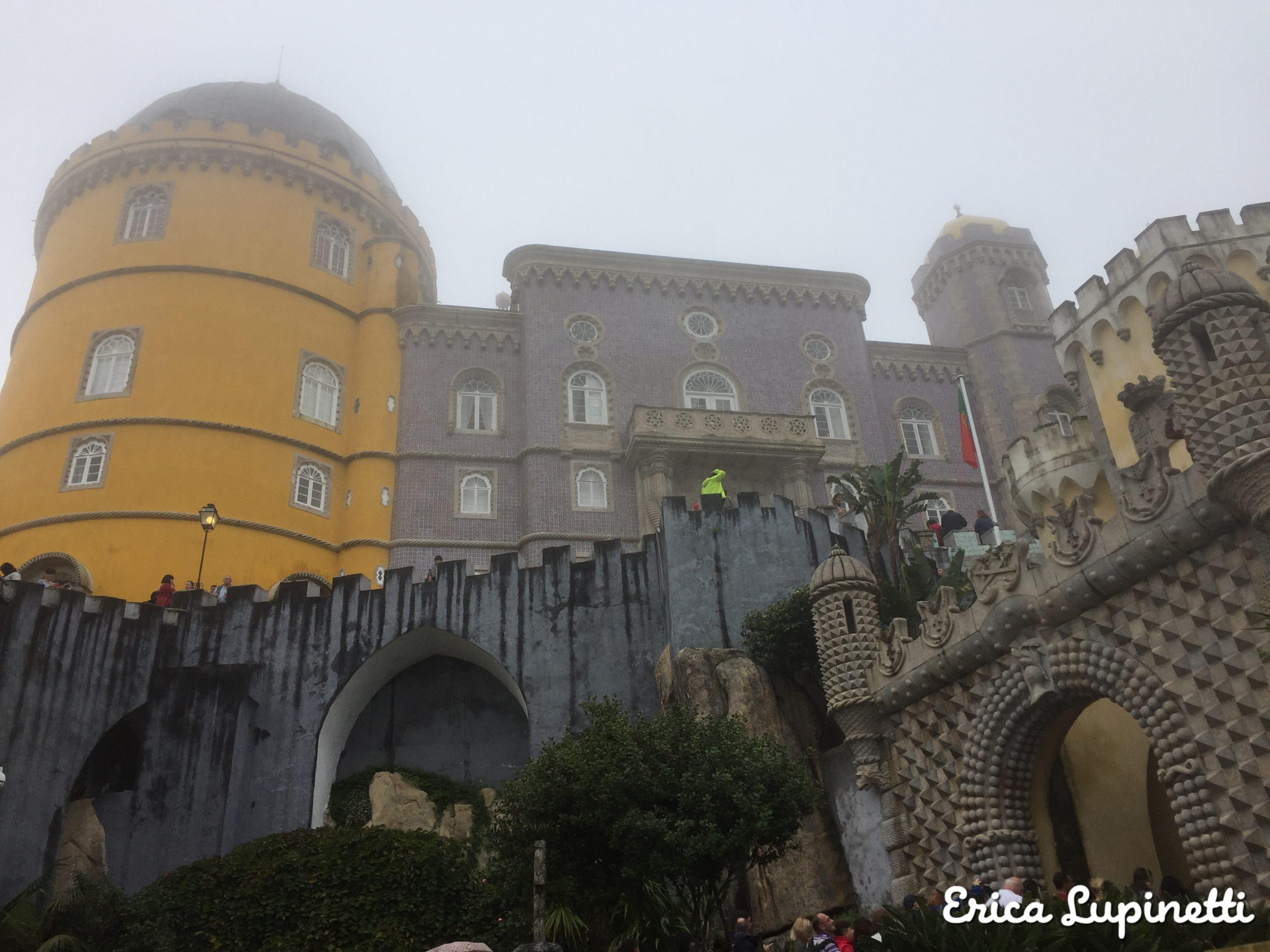
- Palácio Nacional da Pena: this fairy tale colourful castle take us back to the time time of king and queens. It is the most popular and visited castle in Portugal and the first Romantic castle in Europe. The interiors are perfectly conserved and hide mysterious legends.

- Castelo dos Mouros: a long fortification dating back to the 10th century when Moors occupied the area. Its huge walls remind us of a smaller copy of the Chinese Wall, and it constitutes he best viewpoint over Sintra and the ocean.
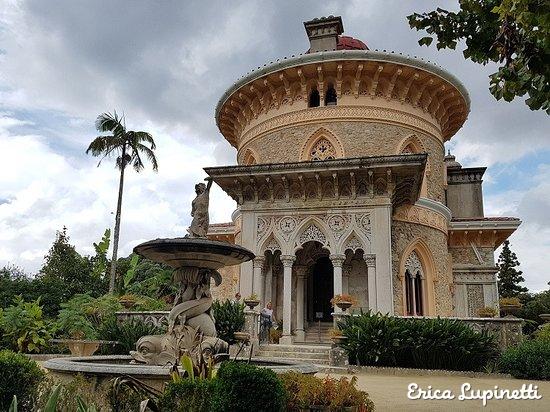
- Palácio de Monserrate: this palace is a mix of Gothic, Romanic and Indian architecture leaving you the feeling of being in an exotic and surreal place. One of the best examples of landscaping gardens and Romantic architecture.
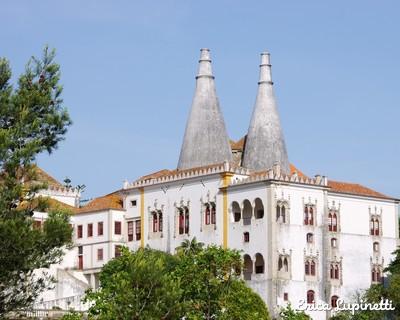
- The Palácio Nacional de Sintra : erected during 15th century this building used to be the royal residence of the Portiguese king during World War I. It a mix of Gothic, Medieval and Renaissance style.
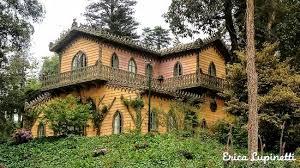
- Chalet and Garden of Comptess Edla: this building comes straight out of a Disney film, and appears to perfectly mingle with the forest behind. This eclectic palace is surrounded by botanical gardens and should be part of your itinerary.
I only managed to visit Sintra village and the Palácio Nacional da Pena being very busy and rainy with over one hour queuing before accessing the castle even if I had bought the ticket in advance. My advice is to get there as early as possible with your pre-booked ticket and avoid high season. I will have to come back on a sunnier day to do the rest. To earn time and see at least two palaces per day I advise you to take an organised tour where the guide will explain you the local history and will wipe the stress of taking the buses away. Have a look on “Getyourguide” or “Civitatis” guided tours to save time and money or once you arrive near Sintra train station you will find plenty of guides trying to sell their services to you.

Palacio de Pena
This magnificent castle at the top of the hill is considered one of the seven wonders of Portugal and it is for sure one of the most photographed and visited castles of all times. But is it called like that? Let’s see together the main stages of its history:
The names of the castle derives from the fact that it is built on the site of a medieval chapel dedicated to the local Virgin Mary call “Our Lady of Pena.” According to tradition the site became an important pilgrimage destination following an apparition of the Virgin Mary. In 1493, even King John II of Portugal and his wife Queen Leonor climbed up the mountain to honour their patron and impressed by the beauty of this site decided to build a monastery and a sanctuary. Until the 18th century it was just a small structure housing about 18 monks and it was seen as a place where prayers were listened to and an isolated place perfect for a hermit life.
The palace was badly damaged during the earthquake of 1755.but miraculously the chapel was untouched, confirming the magical fame of this place.
A few decades later, prince Ferdinand, the future king of Portugal decided to rebuild the old monastery, as long as an imposing castle to serve the Portuguese royal family and the people. A German architect, Baron Wilhelm Ludwig von Eschwege, designed Pena Palace between 1842 and 1854 which became the main setting for celebrations and official meetings.
The palace was rebuilt many times and the clock tower, the walls of arches, the drawbridge etc. were added later on. The current style of Pena Palace has been created during 19th century and features a cocktail of Medieval, Renaissance, Gothic, Moorish and Manueline style, with an unmistakable Romantic general aura on the interiors too. The clock tower construction was finished in 1843, and it’s an element of the Queen’s Terrace, where a cannon strikes at noon everyday.
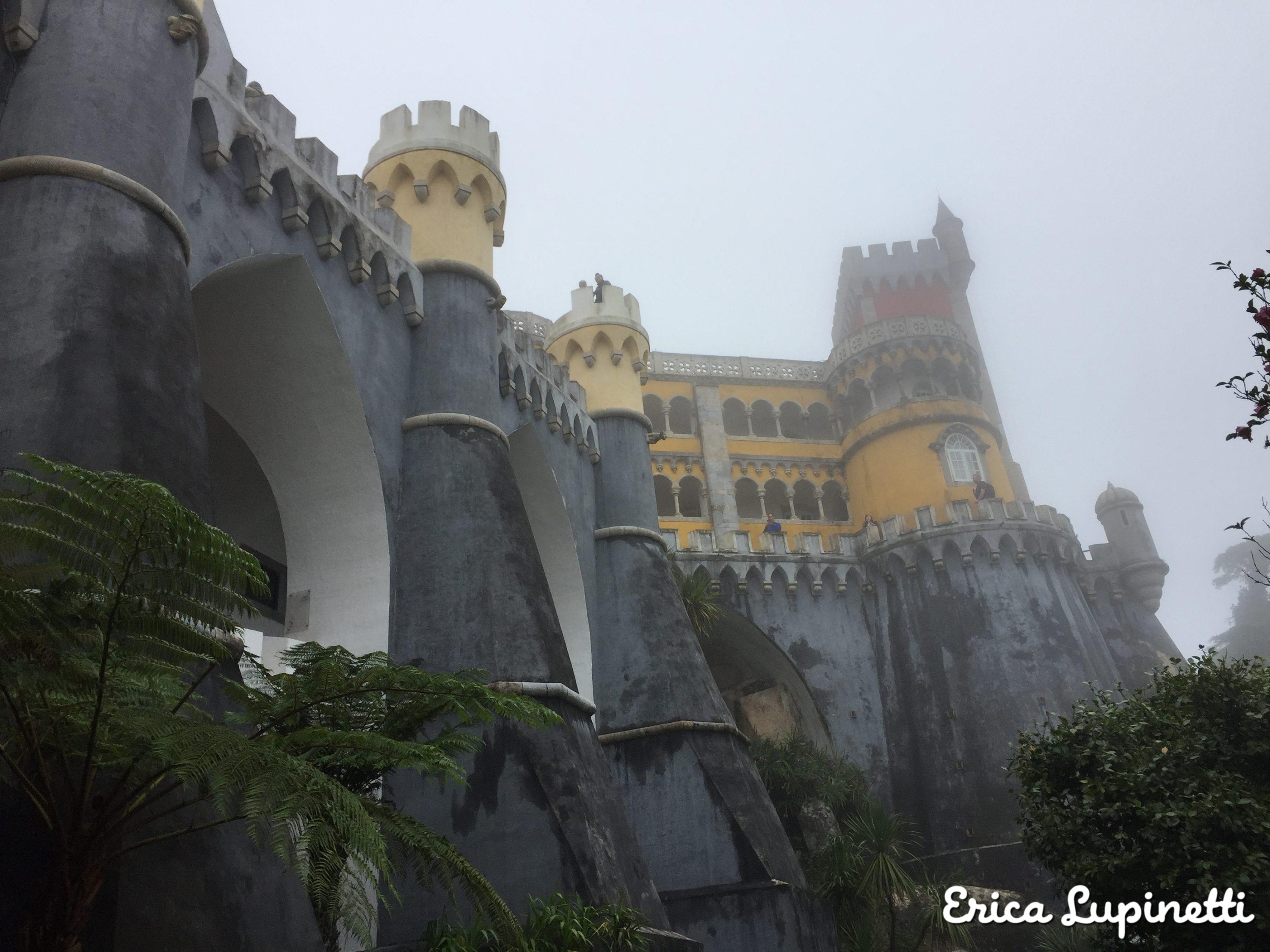
The garden stretches over 200 hectares and was once conceived to be a labyrinth with narrow paths and stairs but most of all a conservation place for many exotic plant species. It was created in the 19th century by King Ferdinand II of Portugal, who decided to import ancient plants from all over the world. In this shady mystical forest you will find trees such as Magnolias, Japanese Cryptomeria, Chinese Ginko, American Sequoia, Cypress, and many more.
This place is a true wonderland, so take the time to explore it with no rush and sink into a world of mystery and surprising details. You can also book free guided tours to help you know more about the history of this place!

Take the 434-tourist bus to avoid climbing for more than one hour uphill and save time: it connects the train station to the historic centre and then climbs the hill to the Palácio Nacional da Pena (via the Castle of the Moors), before returning to the train station. A hop-on-hop-off ticket for the entire route costs €6.90 or a single cost €3.90. There is also the 435-tourist bus which connects the train station to the Palácio de Monserrate and the Quinta da Regaleira palace. If you are fit and it’s a sunny day you can also check the hiking routes that take to the different palaces but this is an option I advise to people staying over a couple of days at least. For more information about the hikes at Sintra check this link. Civitatis also organise guided hiking hours to avoid wasting time of amateur hikers looking for the right path.
I recommend you the interesting guided tours organised by the “Take Walks” company. Click on the link to see their personalised tours. They also organise virtual tours:
Tours from Home Flavor of Bairro Alto & Chiado: Carmo Convent & Santa Justa Rooftop with Green WineLisbon in a Day: Castle, Cathedral Climb, Jerónimos Monastery, Belém & River Cruise
Supreme Sintra: First Entry Guided Pena Palace Interior & Terraces plus Quinta da Regaleira Tour